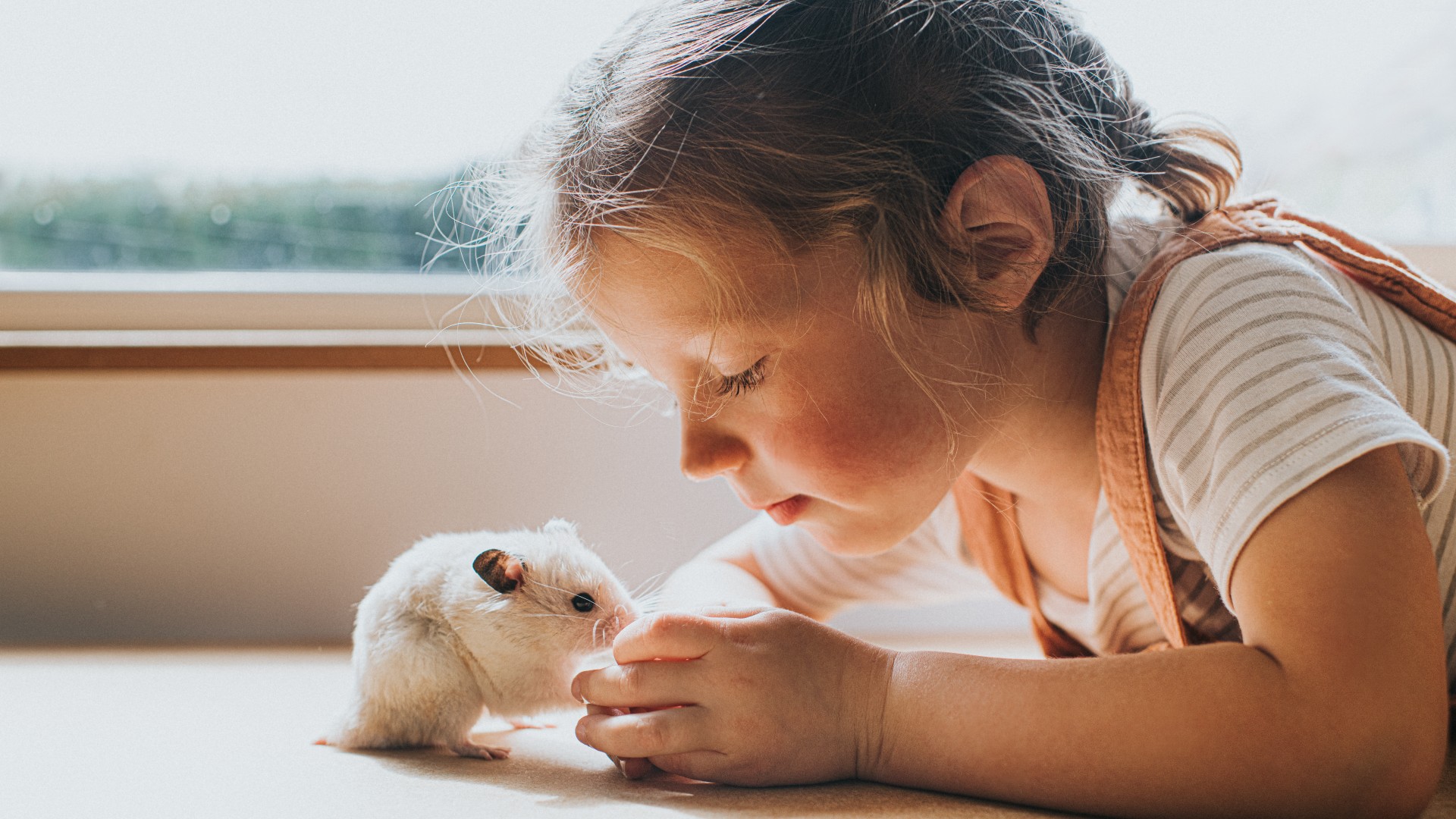How to play with a hamster: Are you engaging properly?
It may be hammy time, but if you don't know how to play with a hamster, you could cause your pet unnecessary stress

Understanding how to play with a hamster will allow both you and your little furbaby to have lots of fun without any fear. With careful handling, you can ensure your hamster will feel confident and safe around you while also making it far less likely that you're going to get bitten – a common way of knowing that a hamster is scared and isn't being played with properly.
Hamsters are not like cats and dogs but you can still form a bond with them. It's just going to take more time and work to establish a level of trust, but that's no surprise given you're a giant in comparison and naturally frightening. Before you even begin to play, then, you'll need to make a hamster comfortable. Start by investing in one of the best hamster cages and place it away from light and noise. Invest in a wheel, bedding, places to hide and a comfortable spot to sleep.
The idea is that you get your hamster used to your home environment and any humans that live there. So engage with your cuddly fur ball through the cage, talking and feeding, being careful not to push your fingers too close at first. Get the hamster used to your scent and, when you feel the time is right, approach with more confidence. Let your pet come to you and curiously sniff you out. Place food in the palm of your hand and open the cage door. If your hamster climbs aboard and eats, then playtime is close.
- 5 reasons why your hamster is scared of you
- How to help a stressed hamster
- Why is my hamster biting me?
Do hamsters like to be held?
Hamsters are generally averse to being picked up and held but that is not to say that you shouldn't do it. Once hamsters are used to the smells, sights and sounds of you and your home, they are going to become far less stressed and they will stop seeing handling as a threat. The important thing is to not force playtime. Do that and a hamster is more likely to become hostile.
Timing is everything. Hamsters are often called nocturnal creatures but they are actually crepuscular. They rest and sleep during the day and they are active at twilight, which means at dawn and dusk. Now, you may not be as awake as your pet at these times, but if you coincide playtime with those periods – certainly at first – then your hamster will be most receptive.
One thing you shouldn't do is wake a hamster in order to play. This will prove stressful and it could cause your hamster to bite or squeal which is a sign that you should leave them alone. Wait until your hamster is moving around and perhaps playing with the best hamster toys in their cage before you decide to interact. And steer clear of ever picking them up from their bed. It's their safe space and they need to know they can kip without being afraid of ever being disturbed.
How to hold a hamster

Before you even consider holding a hamster, ensure the room containing the cage is totally secure so that your pet can't escape. Next, wash your hands with an unscented soap and dry them – especially if you have touched another pet in the house. Hamsters have an acute sense of smell and they will primarily recognise you from your scent. You must reassure your hamster that it is indeed you who is looking to engage.
Get the best advice, tips and top tech for your beloved Pets
At that point you can slowly reach into the cage to pick up your pet. Make sure your hamster can see you doing this – you're not looking to sneak up on them from behind! Once a hamster is in your palm, you should place another hand under its bottom and scoop it up gently while trying to keep your hands as low as possible.
This will help to protect your hamster should it decide to leap away, ensuring it doesn't end up crashing to the floor and injuring itself. In any case, as you lift keep your pet facing towards you and, again, move slowly. But what if this isn't working?
Well, you could continue trying to establish trust but you can also try opening the cage door and allowing the hamster to leave on its own accord (never leave the room at that point or take your eyes off your hamster). By placing some food in your palm, you can then encourage your hammy towards you.
While you're doing all of this, there should be no other pets such as dogs and cats anywhere around you. Once you've built up a rapport, you can then introduce your hamster to toys outside of the cage, always keeping a watchful eye just in case they escape. If you do lose sight of your pet, you'll need to know how to find a lost hamster but it's vital that you act fast. Hamsters can squeeze through the tightest of spots.
How do you get your hamster to like you?
If all of this seems like hard work, it is, but the results are worth it. The next stage will be to learn how to bond with your hamster so that playtime will become more fun.
Let your hammy take the lead, allowing it to run around (again, in a secure area). Then, when you want to entice your hammy over, place some food on your palm and they should soon venture towards you (if you've ever wondered “what can hamsters eat?”, it's worth reading our guide).
When you do have your hamster's attention, gently stroke its back, watching carefully and stopping if there are signs of distress. You may also want to consider setting up a playpen for safety or producing a fun obstacle course. Keep your hamsters mind ticking over by tapping into their natural instincts.
And remember, a hamster will also be in a far better mood in general if their home is spacious so ask yourself how big should a hamster cage be? and make sure they have sufficient space to run and play at night. Larger cages will also make your attempts to reach inside appear less threatening which will set up a playtime session perfectly. You'll be best buddies before you know it.
Found this helpful? You might also want to read: How long do hamsters live?

David Crookes has been a journalist for almost 30 years and he has written for a host of magazines, newspapers, websites and books including the World of Animals Annual, BBC Earth, Live Science, The Independent and Tom’s Guide.
Born in England, he lives with two cats but he’s also keenly interested in the differences between the huge number of dog breeds – in fact, you can read many of his breed guides that he’s written in collaboration with vets here on PetsRadar.
With a lifelong passion for technology, too, he’s always on the lookout for useful devices that will allow people to keep their pets happier and healthier, and provide them more time to spend together.
David has a degree from Durham University, as well as postgraduate diploma in journalism from the University of Central Lancashire.
